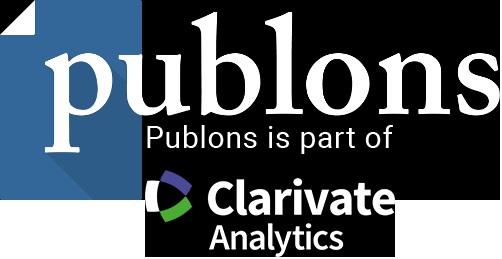A NEW INTUITION INTO TOURISM-INCLUSIVE GROWTH NEXUS IN TURKEY AND NIGERIA (1995 – 2018)
DOI:
https://doi.org/10.2478/eoik-2021-0006Keywords:
Asymmetric, Bootstrap simulation method, Inclusive growth, Symmetric, TourismAbstract
This paper examines the symmetric and asymmetric causal relationships between tourism and inclusive growth in Turkey and Nigeria over the period 1995Q1-2018Q4. The study employs a bootstrap simulation method with leverage adjustments to achieve the objective of the study. The method is used to see whether positive or negative tourism shocks cause inclusive growth and whether positive or negative inclusive growth shocks cause tourism activity. The results show no evidence of asymmetric causality between tourism and inclusive growth, while there is evidence of symmetric causality running from tourism to inclusive growth in Turkey. On the other hand, there is neither symmetric nor asymmetric causal relationship between tourism and inclusive growth in Nigeria. In sum, both neutrality and tourism-led growth hypothesis hold in Turkey, while Nigeria gives credence to neutrality hypothesis. The recommendations coming from the findings are that the tourism sector in both countries, Nigeria in particular, should be repositioned for better performance and effectiveness in stimulating inclusive growth. Rather than focusing on pro-poor and micro-based tourism policies that favour selected communities and localities, tourism should be included in development plans nationally, in order to ensure wider participation and more encompassing trickle-down effects on the citizenry. Furthermore, both countries should implement policies that will stimulate their tourism sectors for a larger and more significant contribution to real GDP.
References
Adewale, S.B. (2011). The crowding-out effects of corruption in Nigeria: An empirical study. E3 Journal of Business Management and Economics, 2(2), 59 – 68.
Ajani, F. & Kalu, J.E. (2017). Economy diversification: A potent tool for economic development in Nigeria. International Journal of Science and Technology, Bahir Dar-Ethiopia, 6(2), 94 – 114. http://dx.doi.org/10.4314/stech.v6i2.7
Atan, S. & Arslanturk, Y. (2012). Tourism and economic growth nexus: An input output analysis in Turkey. Procedia – Social and Behavioural Sciences, 952 – 956. https://doi.org/10.1016/j.sbspro.2012.09.162
Ayeni, D.A. (2013). Promoting sustainable tourism through tourism development infrastructure in Nigeria. Scottish Journal of Arts, Social Sciences and Scientific Studies, 9(1), 3 – 14.
Ayinde, T.O. & Yinusa, O.G. (2016). Financial Development and Inclusive Growth in Nigeria: A Treshold Analysis. Acta Universitatis Danubius (AUDŒ), 12(5), 326-346.
Azeez, R.O. (2019). Is tourism a sustainable haven for economic growth in North African countries? An evidence from panel analysis. Munich Personal RePEc Archive (MPRA) Paper93449, 1 –28.
Bakker, M. & Messerli, H.R. (2017). Inclusive growth versus pro-poor growth: Implications for tourism development.Tourism and Hospitality Research, 17(4), 384 – 391. https://doi.org/10.1177%2F1467358416638919
Brida, J.G., Lanzilotta, B. & Pizzolon F. (2016). Dynamic relationship between tourism and economic growth in MERCOSUR countries: A nonlinear approach based on asymmetric time series models. Economics Bulletin, 36(2), 879 – 894.
Cortes-Jimenez, I. & Pulina, M. (2006). A further step into the TLGH and ELGH for Spain and Italy. Nota di Lavoro, 118, 1 – 29.
Dritsakis, N. (2012). Tourism development and economic growth in seven Mediterranean countries: A panel data approach. Tourism Economics, 18(1), 801 – 816. http://doi.org/10.5367/te.2012.0140
Durotoye, A. (2014). The MINT countries as emerging economic power bloc: Prospects and challenges. Developing Country Studies, 4(15), 99 – 106.
Ertugrul, H.M. & Mangir, F. (2012). The tourism-led growth hypothesis: Empirical evidence from Turkey. Munich Personal RePEc Archive (MPRA) Paper 96419, 1 – 15.
Eyuboglu, S. & Eyuboglu, K. (2019). Tourism development and economic growth: an asymmetric panel causality test. Current Issues in Tourism, 1 – 7. https://doi.org/10.1080/13683500.2019.1588863
Georgantopoulos, A.G. (2017). Tourism expansion and economic development: VAR/VECM analysis and forecasts for the case of India.Asian Economic and Financial Review, 3(4), 464 – 482.
Govdeli, T. & Direkci, T.B. (2017). The relationship between tourism and economic growth: OECD countries.International Journal of Academic Research in Economics and Management Sciences, 6(4), 104 – 113. http://dx.doi.org/10.6007/IJAREMS/v6-i4/3489
Granger, C. W. & Yoon, G. (2002). Hidden cointegration. University of California, Economics Working Paper (2002-02).
Hacker, R. S. & Hatemi-J, A. (2010). HHcte: GAUSS module to apply a bootstrap test for causality with endogenous lag order. Statistical Software Components G00012, Department of Economics, Boston College, United States.
Hampton, M.P., Jeyacheya, J. & Long, P.H. (2018). Can tourism promote inclusive growth? Supply chains, ownership and employment in Ha Long Bay, Vietnam.Journal of Development Studies, 54(2), 359 – 376. https://doi.org/10.1080/00220388.2017.1296572
Hatemi-J, A. (2012). Asymmetric causality tests with an application. Empirical Economics, 43(1), 447–456. http://dx.doi.org/10.1007/s00181-011-0484-x
Hatemi-J, A. (2014a). Asymmetric generalized impulse responses with an application in finance. Economic Modelling, 36, 18–22.
Hatemi-J, A. (2014b). ASCOMP: GAUSS module to transform data into cumulative positive and negative components, Statistical Software Components G00015, Department of Economics, Boston College, United States.
Hatemi-J, A. & El-Khatib, Y. (2016). An extension of the asymmetric causality tests for dealing with deterministic trend components. Applied Economics, 48(42), 4033–4041.
Hatemi-J, A., Gupta, R., Kasongo, A., Mboweni, T. & Netshitenzhe, N. (2014). Are there asymmetric causal relationships between tourism and economic growth in a panel of G-7 countries? University of Pretoria, Department of Economics Working Paper Series, 1 – 17.
Hatemi-J, A., Gupta, R., Kasongo, A., Mboweni, T. & Netshitenzhe, N. (2016). Does tourism cause growth asymmetrically in a panel of G-7 countries? Empirica, Journal of European Economics 45(1), 49 – 57. https://doi.org/10.1007/s10663-016-9345-3
Ibukun, C. O. & Aremo, A. G. (2017). Determinants of inclusive growth in Nigeria: An ARDL approach. American Journal of Economics, 7(3) 97-109.
IsikMaden, S., Bulgan, G. & Yildirim, S. (2019). The effect of tourism sector on economic growth: An empirical study on Turkey.Journal of Yasar University, 14(55), 215 – 225.
Jackman, M. & Lorde, T. (2012). Examination of economic growth and tourism in Barbados: Testing the supply-side hypothesis.Tourismos: An International Multidisciplinary Journal of Tourism, 7(2), 203 – 215.
Jackman, M. (2012). Revisiting the tourism-led growth hypothesis for Barbados: A disaggregated market approach, Regional and Sectoral Economic Studies, 12(2), 1 – 12.
Katircioglu, S.T. (2009). Revisiting the tourism-led growth hypothesis for Turkey using the bounds test and Johansen approach for cointegration. Tourism Management, 30, 17 – 20. https://doi.org/10.1016/j.tourman.2008.04.004
Kokotovic, F. & Kurecic, P. (2016). The MINT countries: A regression analysis of the selected economic features. International Journal of Management Science and Business Administration, 2(5), 21 – 31.
Kumar, N., Kumar, R. R., Kumar, R., & Stauvermann, P. J. (2020). Is the tourism–growth relationship asymmetric in the Cook Islands? Evidence from NARDL cointegration and causality tests. Tourism Economics, 26(4), 658-681.
Muhtaseb, B.M.A. & Daoud, H. (2017). Tourism and economic growth in Jordan: Evidence from linear and nonlinear frameworks. International Journal of Economics and Financial Issues, 7(1), 214 – 223.
Olaniyi, C.O. (2020). Application of bootstrap simulation and asymmetric causal approach to fiscal to deficit-inflation nexus. Global Journal of Emerging Markets Economics, 12(2), 123-140. https://doi.org/10.1177%2F0974910120919021
Olomola, P.A. & Osinubi, T.T. (2018). Determinants of total factor productivity in Mexico, Indonesia, Nigeria and Turkey (1980-2014). Emerging Economy Studies, 4(2), 192-217. https://doi.org/10.1177%2F2394901518795072
Osinubi, T.T. (2020a). Causality between total factor productivity and economic growth in Mexico, Indonesia, Nigeria and Turkey: a comparative analysis. International Journal of Business and Emerging Markets, 12(1), 1-10.
Osinubi, T.T. (2020b). The role of income inequality in the globalisation-poverty nexus: Evidence from MINT countries. Ilorin Journal of Economic Policy, 7(2), 67-89.
Osinubi, T.T. & Olomola, P.A. (2020a). Globalisation, income inequality, and poverty relationships: Evidence from Mexico, Indonesia, Nigeria and Turkey. Journal of Economics and Administrative. http://doi.org/10.1108/JEAS-01-2020-0006
Osinubi, T.T. & Olomola, P.A. (2020b). Globalisation and income inequality in Mexico, Indonesia, Nigeria, and Turkey: A dynamic GMM approach. Asian Journal of Economics and Empirical Research, 7(1), 91-104. https://doi.org/10.20448/journal.501.2020.71.91.104
Osinubi, T.T. & Osinubi, O.B. (2020). Inclusive growth in tourism-led growth hypothesis: Evidence from Nigeria. African Journal of Economic Review, 8(2), 141 – 160.
Ovat, O.O. (2003). Tourism and economic development in Nigeria: An empirical investigation. Global Journal of Social Sciences, 2(1), 33 – 44.
Ozturk, I. & Acaravci, A. (2009). On the causality between tourism growth and economic growth: Empirical evidence from Turkey.Transylvanian Review of Administrative Sciences, 25E, 73 – 81.
Phiri, A. (2016). Tourism and economic growth in South Africa: Evidence from linear and nonlinear cointegrating framework. Managing Global Transitions, 14(1), 31-43.
Rotimi, E.M., Obasaju, B., Lawal, A.I. & Ise, O.J. (2013). Analysis of corruption and economic growth in Nigeria. Afro Asian Journal of Social Sciences, 4(4.2), 1 – 19.
Schorderet, Y. (2003). Asymmetric cointegration. Genève: Université de Genève/Faculté des sciences économiques et sociales. Geneva, Switzerland.
Terzi, H. (2015). Is the tourism-led growth hypothesis (TLGH) valid for Turkey? DogusUniversitesiDergisi, 16(2), 165 – 178.
Toda, H. Y. & Yamamoto, T. (1995). Statistical inference in vector autoregressions with possibly integrated processes. Journal of Econometrics, 66(1), 225–250.
World Bank (2020): International tourism, number of arrivals. World Tourism Organization, yearbook of tourism statistics, compendium of tourism statistics and data files. https://data.worldbank.org/indicator/ST.INT.ARVL (accessed on 28th April, 2020).
Young, A.O. (2020). Tourism and growth in Nigeria: Application of TYDL Granger-Causality and Innovation Accounting Techniques.Journal of Tourism Management Research, 7(2), 132 –154. http://doi.org/10.18488/journal.31.2020.72.132.154
Yusuff, M.A. & Ayinde, M.A. (2015). Tourism development and economic growth nexus: Nigeria’s experience. European Centre for Research Training and Development, 3(4), 1 – 10.
Zortuk, M. (2009). Economic impact of tourism on turkey’s economy: Evidence from cointegration tests. International Research Journal of Finance and Economics, 25, 231 – 239.
Zumba, Y.I., Adeshola, F.G., Chiagoziem, O.S. & Abe, M. (2019). Modelling tourism and economic growth nexus in Africa: A symmetric panel ARDL approach. Scientific Research Journal (SCIRJ), 7(4), 139 – 153. http://dx.doi.org/10.31364/SCIRJ/v7.i4.2019.P0419643
Downloads
Published
How to Cite
Issue
Section
License
Copyright (c) 2021 Oikos Institute - Research Centre

This work is licensed under a Creative Commons Attribution-NonCommercial-NoDerivatives 4.0 International License.























